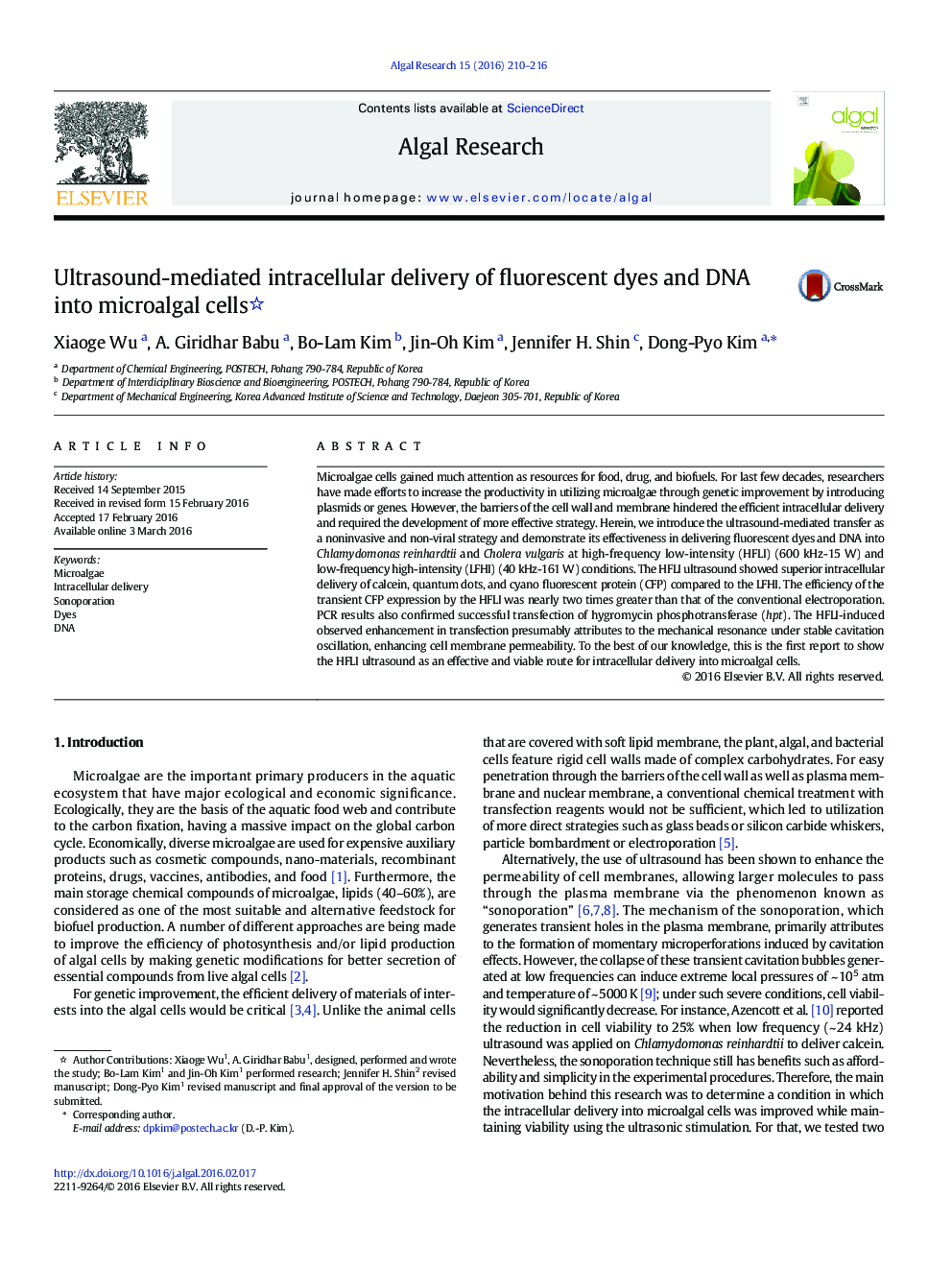| Article ID | Journal | Published Year | Pages | File Type |
|---|---|---|---|---|
| 8087237 | Algal Research | 2016 | 7 Pages |
Abstract
Microalgae cells gained much attention as resources for food, drug, and biofuels. For last few decades, researchers have made efforts to increase the productivity in utilizing microalgae through genetic improvement by introducing plasmids or genes. However, the barriers of the cell wall and membrane hindered the efficient intracellular delivery and required the development of more effective strategy. Herein, we introduce the ultrasound-mediated transfer as a noninvasive and non-viral strategy and demonstrate its effectiveness in delivering fluorescent dyes and DNA into Chlamydomonas reinhardtii and Cholera vulgaris at high-frequency low-intensity (HFLI) (600Â kHz-15Â W) and low-frequency high-intensity (LFHI) (40Â kHz-161Â W) conditions. The HFLI ultrasound showed superior intracellular delivery of calcein, quantum dots, and cyano fluorescent protein (CFP) compared to the LFHI. The efficiency of the transient CFP expression by the HFLI was nearly two times greater than that of the conventional electroporation. PCR results also confirmed successful transfection of hygromycin phosphotransferase (hpt). The HFLI-induced observed enhancement in transfection presumably attributes to the mechanical resonance under stable cavitation oscillation, enhancing cell membrane permeability. To the best of our knowledge, this is the first report to show the HFLI ultrasound as an effective and viable route for intracellular delivery into microalgal cells.
Related Topics
Physical Sciences and Engineering
Energy
Renewable Energy, Sustainability and the Environment
Authors
Xiaoge Wu, A. Giridhar Babu, Bo-Lam Kim, Jin-Oh Kim, Jennifer H. Shin, Dong-Pyo Kim,
